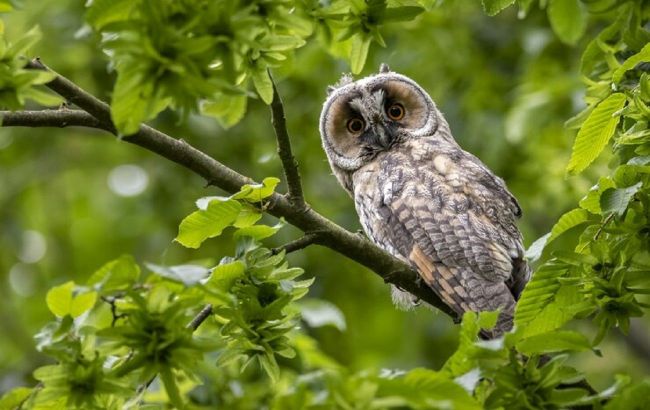What makes owls so special: Top 5 facts about nocturnal birds that will amaze everyone
 Facts about owls that amaze (photo: freepik.com)
Facts about owls that amaze (photo: freepik.com)
Owls are remarkable nocturnal birds with unique characteristics. From their silent flight to their diverse calls, owls have always captivated attention.
RBC-Ukraine has gathered 5 facts about owls that are sure to amaze everyone.
Owls use camouflage
Owls are known for their skillful camouflage. During the day, these nocturnal birds use their feathers to blend in with their surroundings and avoid predators.
For example, the snowy owl (Bubo scandiacus) has white feathers that help it blend in with the snow in the tundra. Meanwhile, the tawny owl (Strix aluco) has feathers that make it nearly invisible against the tree trunks in European forests.
Owls have unique eyes
Owls possess a special type of vision called binocular vision. This means their eyes face forward, like humans, rather than to the sides, as in many other birds. This helps them process more complex visual information.
Like most nocturnal animals, owls have large eyes that allow more light to enter, enabling them to see in the dark. However, instead of spherical eyeballs, owls have cylindrical eyes that extend deep into their skulls. Sometimes, their eyeballs can even be seen through their ear openings.
Because their eyes are not spherical, they cannot rotate within their sockets, meaning most of the movement is done by the owl's round head. Owls can rotate their heads up to 270 degrees, adding to their mysterious appearance.
Owls have super hearing
Although owls don't possess supernatural abilities, their ears are so sensitive that ancient cultures considered them special. Owls rely heavily on their hearing when hunting.
Their ears are large openings on the sides of their heads, positioned at different heights. This asymmetry helps them determine the direction of a sound, as the noise reaches one ear slightly before the other.
To enhance their hearing even further, the entire face of an owl acts like a satellite dish for sound waves. Their tiny beaks are designed not to obstruct sound, and the circular depressions around their large eyes amplify their ability to detect even the faintest noises, like a mouse scurrying under the snow.
Owls can twist their toes
Owls have a unique foot structure that helps them catch prey. Their toes are arranged with two facing forward and two facing backward. This allows them to securely grip branches and capture prey.
But owls have another special feature: they can rotate their fourth toe forward and backward. This means that during flight, they can have three toes facing forward and one facing backward. This ability helps them hold onto their prey more securely, and they don’t expend much energy, as their feet provide a strong grip without constant muscle tension.
Not all owls hoot
When you think of an owl's call, you might imagine the familiar trembling "hoo-hoo." However, not all owls make this sound. The characteristic hoot belongs to the great horned owl, but there are many more variations to be heard.
The barn owl produces a sharp sound similar to creaking doors. Meanwhile, the barred owl makes a call that resembles a horse's whinny. Each species of owl has its own unique voice.
Earlier, we talked about aliens among us: top 5 animals that will amaze everyone.
Sources: Animals How Stuff Works, Tree Hugger.

